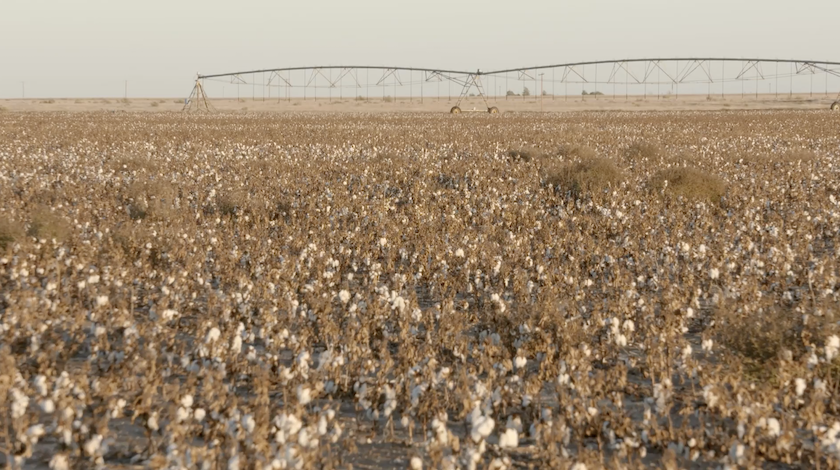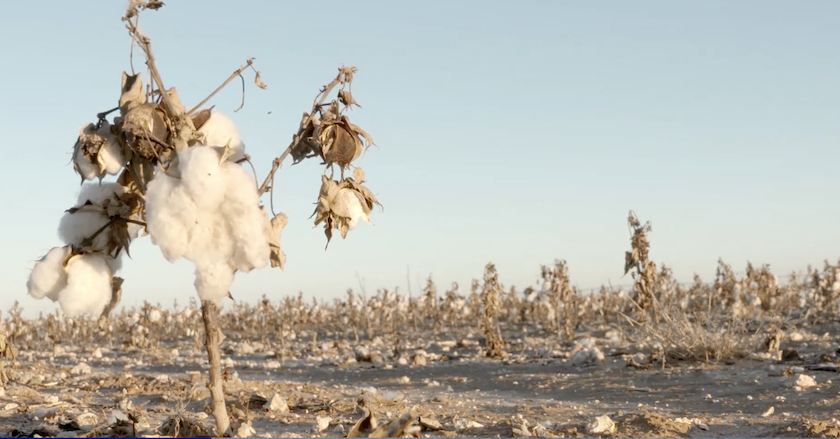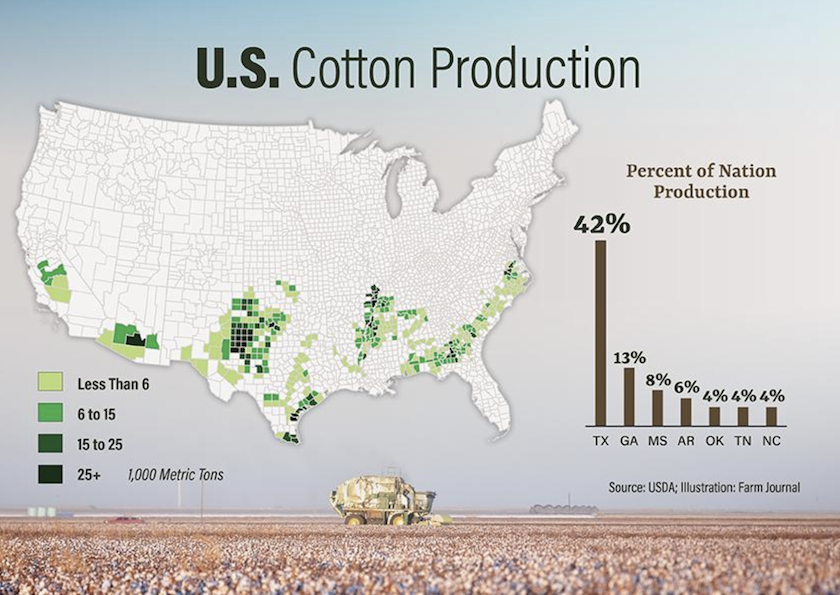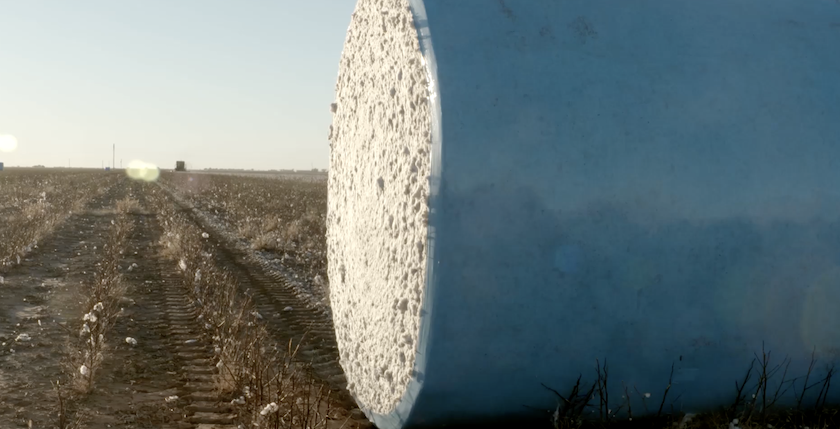No Dryland Crop to Harvest: West Texas Cotton Farmers Open Up About the Harsh Realities of 2023
U.S. Farm Report 12/02/23 - Texas Cotton
No matter where you travel in west Texas this year, the story is the same. Drought and heat created an endless battle for area cotton farmers.
“It was a devastating year,” says Casey Jones, a farmer in Lubbock, Texas.
“This is my 49th crop, and it's been the toughest one to make,” says Bobby Rackler, a farmer in Hockley County, Texas.
Harsh Realities of 2023
The combination of heat and drought dried up hopes of growing a crop this year. Casey Jones’ farm ground is right on the edge of Lubbock, and he says if you ask any area farmer, they’ll tell you the 2023 cotton crop is one those farmers would like to forget.
“I've talked to a lot of my farmer friends about that, and it’s one of those years where you tell yourself, ‘Let's get this one behind us, get it out of the books and let's get on to a better one,’” says Jones.

Rackler says the challenges continued to mount for the West Texas cotton crop.
“Just everything went against it,” says Rackler. “We had 46 days of over 100 degrees and no humidity.”
Dryland Crop is Nonexistent
Farmers in West Texas didn’t have much of a crop to harvest this year. If a farmer only had dryland acres, they didn’t even have a crop to harvest this year.
“Everyone I've talked to is disappointed,” says Racker. “Their yields are way down, some of them lost all of their crop, and they're not even harvesting."
Fields that have no irrigation took the brunt of the heat and dryness, as those fields didn't survive the harsh realities of 2023.

“The dryland is a total failure,” says Rackler. “The irrigated cotton is making a half of what it usually makes. A normal year, our cotton on drip irrigation, will make three bales, but this year it's only making about a bale and a half.”
Cotton harvest can drag on some years, but not this year. Jones says harvest only lasted eight days. And it’s all because the dismal crop meant farmers had less to harvest.
“I've heard farmers across the board say the irrigated ground is about two bales to two and a quarter bales [per acre] on drip. I’ve got some pivots that'll probably go anywhere between a bale and a half [per acre]," he adds.
Tough Start
The growing season started out extremely dry. When Farm Journal visited with farmers in March, they were still debating whether to plant. Consecutive years of little to no moisture meant subsoil moisture was nonexistent. Add to that severe winds in the late winter and early spring, and any winter cover crop and winter wheat didn’t survive the winter.
“We started off really dry and windy from all the way from February, March and April,” says Jones. “We had heavy sustaining winds of 82 mile-per-hour straight line winds.”
After winds and drought demolished cover crops and winter wheat area farmers planted late last year, they finally saw some rain that ended up delaying planting.
“We had 13 inches rain in May, and we really thought that was going to be it. The rain changed our outlook a little bit to go into a summer that was actually wet,” says Jones.
That relief, however, was extremely short-lived. The weather turned dry and hot, quickly zapping the moisture that came in May.
“We sustained 100-degrees-plus for 60-days-plus,” says Jones. “You have to understand that people don't do good in 100 degrees, so you can imagine what plants do with limited water. It's really tough.”
Largest Cotton Patch in the U.S.
The West Texas area is critical for cotton production. USDA shows Texas growers produce 42% of the country’s cotton. The area surrounding Lubbock, Texas, is known as the largest cotton patch in the U.S. And the majority of the cotton crop currently seeing extreme drought conditions is in that key cotton production area.

As cotton prices dropped this year, it's been puzzling to farmers who are experiencing their worst production year on record. Farmers in West Texas know profits will be slim, but in this area of the country, they've learned they still have to protect one of the most precious resources they have.
“We started the first drip in 2008 here because it was a better usage of the water. It has no evaporation. I was skeptical at first, but I found out it does work. And it is stretched our water a lot more,” says Rackler.
Rackler adds that one of his farms had three pivots at one time, pumping 1,200 gallons a minute.
“Now I’m down to 500 gallons on the same well. And it's just stretching your water further and utilizing it the best way you can,” he says.

The downfall is drip irrigation comes with a hefty cost. It’s double the cost of pivot irrigation systems, yet it’s those investments these farmers hope will pay off longer-term.
“It's kind of the rule of 10,” says Jones. “You’re going to get several good years in there, you're going to get a lot of bad years, and you've got to make sure to manage those bad years with the good years.”
As farmers reflect back on 2023, they’re surviving the harsh reality of such a trying year. Jones says there’s only one way to summarize the year West Texas farmers just endured.
“Let's wait for next year,” says Jones with a smile on his face.
U.S. Farm Report and AgDay are hitting the fields to check on cotton harvest progress and yields with the 2023 Cotton Harvest Tour this year, which is sponsored by Deltapine®. The tour is visiting farmers in east-central Texas, Georgia, Tennessee and wrapped up in West Texas.
Related Stories:
East-Central Texas Farmer Blown Away By Cotton Yields This Year
West Tennessee Farmer Says He Just Harvested the Best Cotton Crop of His Life







